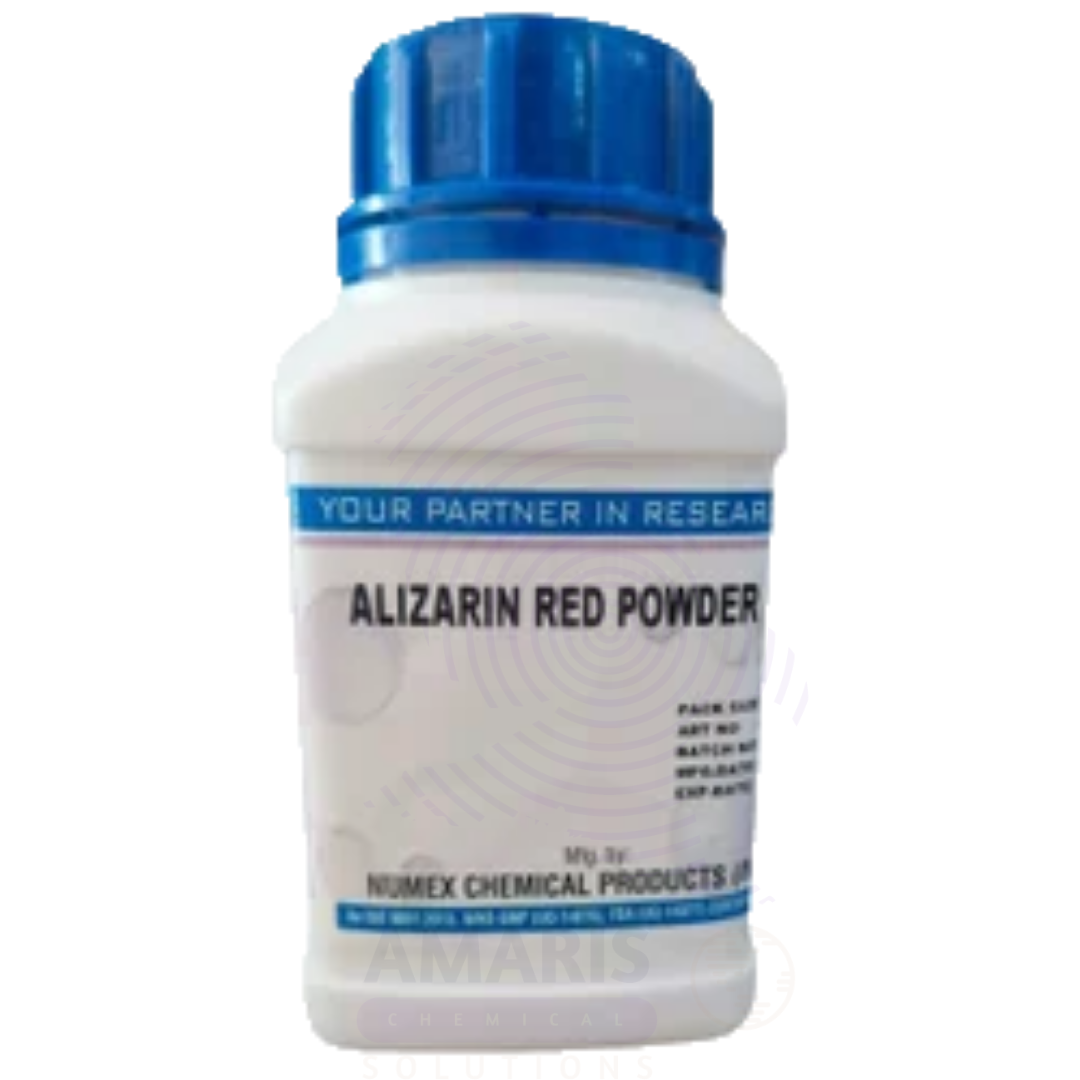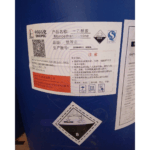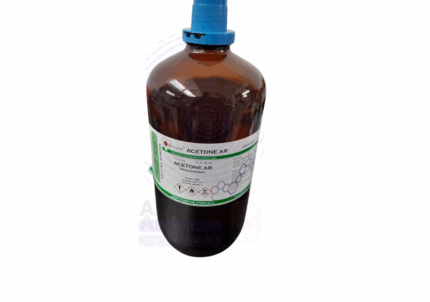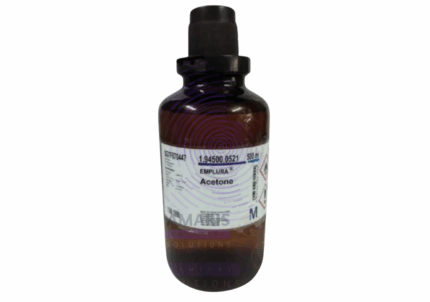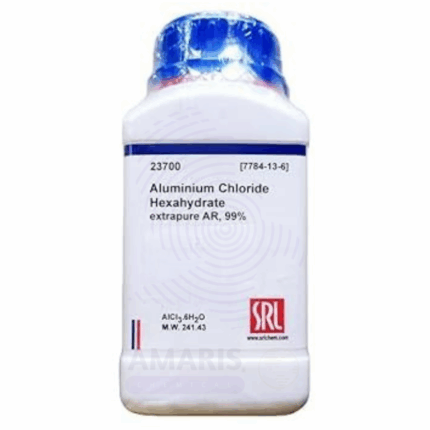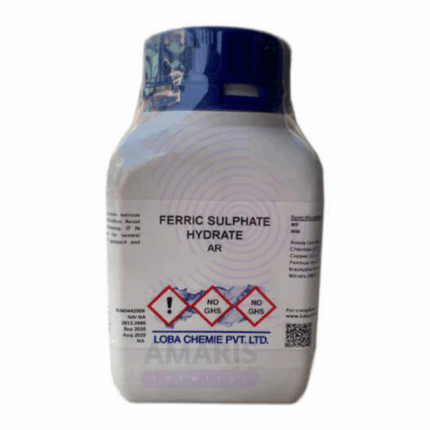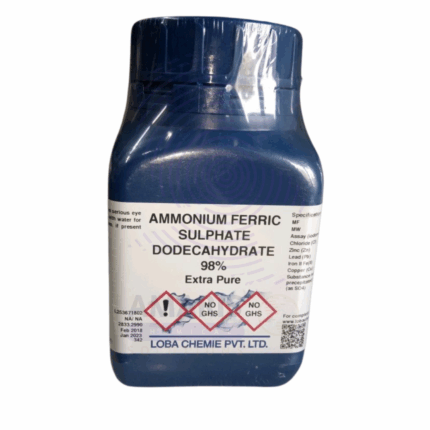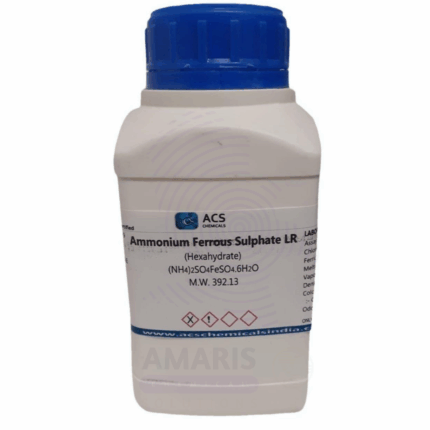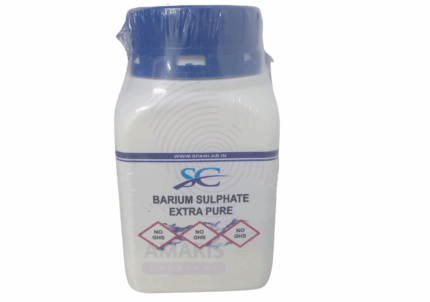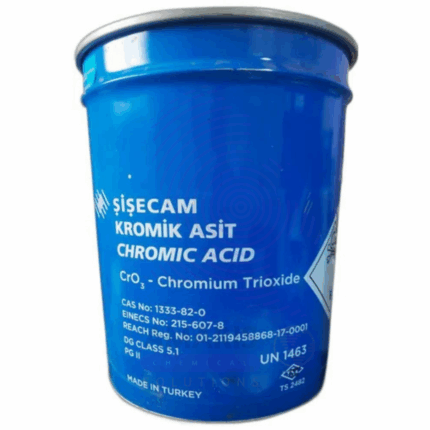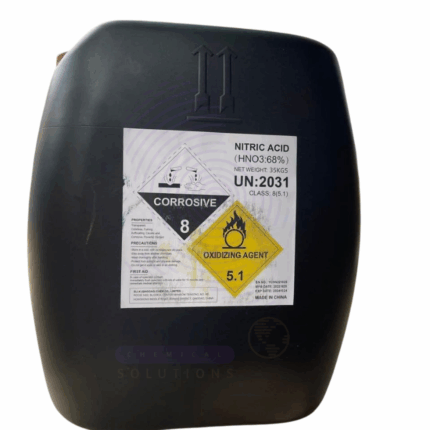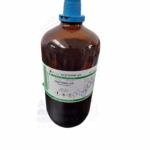
Alizarin Extra Pure
$ 25.00 Original price was: $ 25.00.$ 24.54Current price is: $ 24.54.
Alizarin Extra Pure is a high-grade anthraquinone-based dye, presented as a reddish-brown crystalline powder, renowned for its vivid coloration and strong affinity for metal ions. It is primarily used in analytical chemistry as a complexometric indicator, especially for detecting aluminum, calcium, and other metal ions through color change. Due to its exceptional purity, it is also employed in histological staining, textile research, and pigment synthesis where precision and consistency are critical. Alizarin Extra Pure offers excellent stability and intense coloration, making it ideal for scientific, educational, and specialized industrial applications. Proper storage in a cool, dry environment is essential to maintain its effectiveness and prevent degradation.
Alizarin Extra Pure
Primary Uses
- Analytical Reagent
- Used in complexometric titrations as a metal ion indicator, especially for calcium and magnesium.
- Histological & Biological Staining
- Commonly used to stain calcium deposits in tissues, especially in bone and cartilage (Alizarin Red S staining).
- pH Indicator in Chemistry
- Exhibits color change depending on pH, useful in analytical or educational demonstrations.
- Dye in Thin Layer Chromatography (TLC)
- Acts as a visualization agent for certain metal-containing compounds.
- Material Science & Mineral Analysis
- Used to identify and visualize mineralization patterns, especially calcium-containing compounds.
Secondary Uses
- Educational Chemistry Experiments
- Demonstrates coordination chemistry and complex formation with metal ions.
- Textile Dye Research
- Historical and modern research into natural dye performance, stability, and interactions with fabrics.
- Art Conservation & Pigment Analysis
- Used in studies of historical paintings and pigment composition due to its legacy as a natural dye.
- Inorganic Chemistry Demonstrations
- Forms visibly distinct complexes with certain metal ions, ideal for teaching coordination chemistry.
- Biomineralization Studies
- Helps assess calcification in in-vitro cell cultures and tissue engineering research.
| PACK SIZE |
25gms |
|---|
1. Basic Identification Attributes
- Chemical Name: Alizarin (IUPAC: 1,2-Dihydroxyanthracene-9,10-dione)
- CAS Number: 72-48-0
- HS Code: 32041200 (Synthetic organic coloring matter and preparations based thereon)
- Molecular Formula: C₁₄H₈O₄
- Synonyms:
- Mordant Red 11
- 1,2-Dihydroxyanthraquinone
- Alizarine
- C.I. 58005
2. Physical & Chemical Properties
- Physical State: Solid (powder or crystalline)
- Color & Odor: Orange to red crystalline powder; odorless
- Boiling Point: Decomposes before boiling
- Melting Point: ~277°C (decomposes)
- Density/Specific Gravity: ~1.56 g/cm³
- Solubility:
- Water: Slightly soluble (better in hot water)
- Organic Solvents: Soluble in ethanol, acetone, and alkaline solutions (forms salts)
- pH Level: ~4–5 in aqueous suspension
- Vapor Pressure & Volatility: Negligible vapor pressure; non-volatile
- Flash Point: Not flammable under normal conditions
- Autoignition Temperature: Not applicable
- Viscosity: Not applicable (solid)
3. Safety & Hazard Attributes
- Hazard Class (GHS):
- Not classified as hazardous under normal conditions
- May cause mild skin/eye/respiratory irritation
- NFPA Ratings:
- Health: 1
- Flammability: 1
- Reactivity: 0
- Exposure Limits:
- No OSHA PEL or ACGIH TLV established
- Reactivity:
- Stable under normal conditions
- Incompatible with strong oxidizing agents
4. Storage & Handling Attributes
- Storage Conditions:
- Store in a tightly sealed container in a cool, dry, well-ventilated place
- Avoid exposure to light and moisture
- Incompatible Materials:
- Strong oxidizers (e.g., nitric acid, hydrogen peroxide)
- Container Type:
- Glass or chemical-resistant plastic containers
- Shelf Life & Expiration Date:
- Stable for 3–5 years under ideal storage conditions
- Special Handling Requirements:
- Avoid inhaling dust; use personal protective equipment (PPE)
- Use in a ventilated area or fume hood
5. Regulatory & Compliance Attributes
- Regulatory Status:
- Listed in TSCA, REACH
- Used in research, dyes, and historical art restoration
- Hazard Symbols (GHS Pictograms):
- Not required unless in bulk industrial concentrations
- Transportation Restrictions:
- Not classified as hazardous for transport
- No UN number assigned
- Waste Disposal Method:
- Dispose of in accordance with local environmental regulations
- Incineration or hazardous waste landfill depending on use context
6. Environmental & Health Impact
- Ecotoxicity:
- Limited data; not known to be highly toxic to aquatic life in low concentrations
- Persistence in Environment:
- Moderately persistent; limited biodegradability
- Carcinogenicity/Mutagenicity:
- Not classified as carcinogenic by IARC, NTP, or OSHA
- Biodegradability:
- Slowly biodegradable; may accumulate in sediment in large quantities
SAFETY PRECAUTIONS
- Personal Protective Equipment (PPE):
- Wear chemical-resistant gloves, safety goggles, lab coat, and a dust mask or respirator if dust is present.
- Handling:
- Handle with care to avoid generating dust.
- Use in a well-ventilated area or under a fume hood.
- Avoid inhalation, ingestion, or contact with skin and eyes.
- Storage:
- Store in a tightly sealed container in a cool, dry, well-ventilated place.
- Protect from light and moisture.
- Keep away from strong oxidizing agents.
- Hygiene Measures:
- Wash hands and face thoroughly after handling.
- Do not eat, drink, or smoke during use.
- Change contaminated clothing immediately.
FIRST AID MEASURES
- Inhalation:
- Move to fresh air immediately.
- Keep at rest in a position comfortable for breathing.
- Seek medical attention if symptoms like coughing or breathing difficulty appear.
- Skin Contact:
- Wash skin thoroughly with soap and water.
- Remove any contaminated clothing.
- Seek medical advice if irritation develops.
- Eye Contact:
- Rinse immediately with plenty of water for at least 15 minutes.
- Lift eyelids occasionally during rinsing.
- Seek medical attention if redness or pain persists.
- Ingestion:
- Rinse mouth with water.
- Do not induce vomiting.
- Seek immediate medical attention, especially if large quantities are ingested.
FIRE FIGHTING MEASURES
- Suitable Extinguishing Media:
- Use dry chemical powder, foam, carbon dioxide (CO₂), or water spray.
- Specific Hazards:
- May emit toxic fumes under fire conditions, such as carbon monoxide (CO) and carbon dioxide (CO₂).
- Powdered form may pose a dust explosion risk in confined environments.
- Protective Equipment for Firefighters:
- Wear full firefighting gear and self-contained breathing apparatus (SCBA).
- Firefighting Instructions:
- Cool fire-exposed containers with water spray.
- Avoid inhalation of fumes and keep upwind.
- Contain runoff to prevent contamination of water sources.


 Preservatives(food)
Preservatives(food) Flavor Enhancers
Flavor Enhancers Acidulants
Acidulants Sweeteners
Sweeteners Antioxidants
Antioxidants Colorants(food)
Colorants(food) Nutraceutical Ingredients (food)
Nutraceutical Ingredients (food) Nutrient Supplements
Nutrient Supplements Emulsifiers
Emulsifiers
 Collectors
Collectors Dust Suppressants
Dust Suppressants Explosives and Blasting Agents
Explosives and Blasting Agents Flocculants and Coagulants
Flocculants and Coagulants Frothers
Frothers Leaching Agents
Leaching Agents pH Modifiers
pH Modifiers Precious Metal Extraction Agents
Precious Metal Extraction Agents
 Antioxidants(plastic)
Antioxidants(plastic) Colorants (Pigments, Dyes)
Colorants (Pigments, Dyes) Fillers and Reinforcements
Fillers and Reinforcements Flame Retardants
Flame Retardants Monomers
Monomers Plasticizers
Plasticizers Polymerization Initiators
Polymerization Initiators Stabilizers (UV, Heat)
Stabilizers (UV, Heat)
 Antifoaming Agents
Antifoaming Agents Chelating Agents
Chelating Agents Coagulants and Flocculants
Coagulants and Flocculants Corrosion Inhibitors
Corrosion Inhibitors Disinfectants and Biocides
Disinfectants and Biocides Oxidizing Agents
Oxidizing Agents pH Adjusters
pH Adjusters Scale Inhibitors( water)
Scale Inhibitors( water)
 Antioxidants(cosmetic)
Antioxidants(cosmetic) Emollients
Emollients Fragrances and Essential Oils
Fragrances and Essential Oils Humectants
Humectants Preservatives
Preservatives Surfactants(cosmetic)
Surfactants(cosmetic) Thickeners
Thickeners UV Filters
UV Filters
 Fertilizers
Fertilizers Soil Conditioners
Soil Conditioners Plant Growth Regulators
Plant Growth Regulators Animal Feed Additives
Animal Feed Additives Biostimulants
Biostimulants Pesticides (Herbicides, Insecticides, Fungicides)
Pesticides (Herbicides, Insecticides, Fungicides)
 Active Pharmaceutical Ingredients (APIs)
Active Pharmaceutical Ingredients (APIs) Excipients
Excipients Solvents(pharmaceutical)
Solvents(pharmaceutical) Antibiotics
Antibiotics Antiseptics and Disinfectants
Antiseptics and Disinfectants Vaccine Adjuvants
Vaccine Adjuvants Nutraceutical Ingredients (pharmaceutical)
Nutraceutical Ingredients (pharmaceutical) Analgesics & Antipyretics
Analgesics & Antipyretics
 Analytical Reagents
Analytical Reagents Solvents(lab)
Solvents(lab) Chromatography Chemicals
Chromatography Chemicals Spectroscopy Reagents
Spectroscopy Reagents microbiology-and-cell-culture-reagents
microbiology-and-cell-culture-reagents Molecular Biology Reagents
Molecular Biology Reagents Biochemical Reagents
Biochemical Reagents Inorganic and Organic Standards
Inorganic and Organic Standards Laboratory Safety Chemicals
Laboratory Safety Chemicals Specialty Laboratory Chemicals(Special Laboratory Equipment)
Specialty Laboratory Chemicals(Special Laboratory Equipment)
 Demulsifiers
Demulsifiers Hydraulic Fracturing Fluids
Hydraulic Fracturing Fluids Scale Inhibitors(oil)
Scale Inhibitors(oil) Surfactants(oil)
Surfactants(oil) Drilling Fluids
Drilling Fluids
 Dyes and Pigments
Dyes and Pigments Bleaching Agents
Bleaching Agents Softening Agents
Softening Agents Finishing Agents
Finishing Agents Antistatic Agents
Antistatic Agents
 Admixtures
Admixtures Waterproofing Agents
Waterproofing Agents Sealants and Adhesives
Sealants and Adhesives Curing Compounds
Curing Compounds Concrete Repair Chemicals
Concrete Repair Chemicals Anti-Corrosion Coatings
Anti-Corrosion Coatings
 Surfactants(cleaning)
Surfactants(cleaning) Builders
Builders Enzymes
Enzymes Solvents (Cleaning)
Solvents (Cleaning) Fragrances
Fragrances
 Electronic Chemicals
Electronic Chemicals Catalysts
Catalysts Lubricants
Lubricants Photographic Chemicals
Photographic Chemicals Refrigerants
Refrigerants Automotive chemicals
Automotive chemicals Pyrotechnic Chemicals
Pyrotechnic Chemicals
 Biodegradable Surfactants
Biodegradable Surfactants Bio-based Solvents
Bio-based Solvents Renewable Polymers
Renewable Polymers Carbon Capture Chemicals
Carbon Capture Chemicals Wastewater Treatment Chemicals
Wastewater Treatment Chemicals
 Pigments
Pigments Solvents(paint)
Solvents(paint) Specialty Coatings
Specialty Coatings Binders/Resins
Binders/Resins Additives
Additives Driers
Driers Anti-Corrosion Agents
Anti-Corrosion Agents Functional Coatings
Functional Coatings Application-Specific Coatings
Application-Specific Coatings
 Fresh Herbs
Fresh Herbs Ground Spices
Ground Spices Whole Spices
Whole Spices Spice Blends
Spice Blends Dried Herbs
Dried Herbs
 Leavening Agents
Leavening Agents Dough Conditioners
Dough Conditioners Flour Treatments
Flour Treatments Fat Replacers
Fat Replacers Decoratives
Decoratives Preservatives(baking)
Preservatives(baking)
 Plasticizers & Softeners
Plasticizers & Softeners Reinforcing Agents
Reinforcing Agents Adhesion Promoters
Adhesion Promoters Vulcanizing Agents
Vulcanizing Agents Antidegradants
Antidegradants Blowing Agents
Blowing Agents Fillers & Extenders
Fillers & Extenders Accelerators & Retarders
Accelerators & Retarders